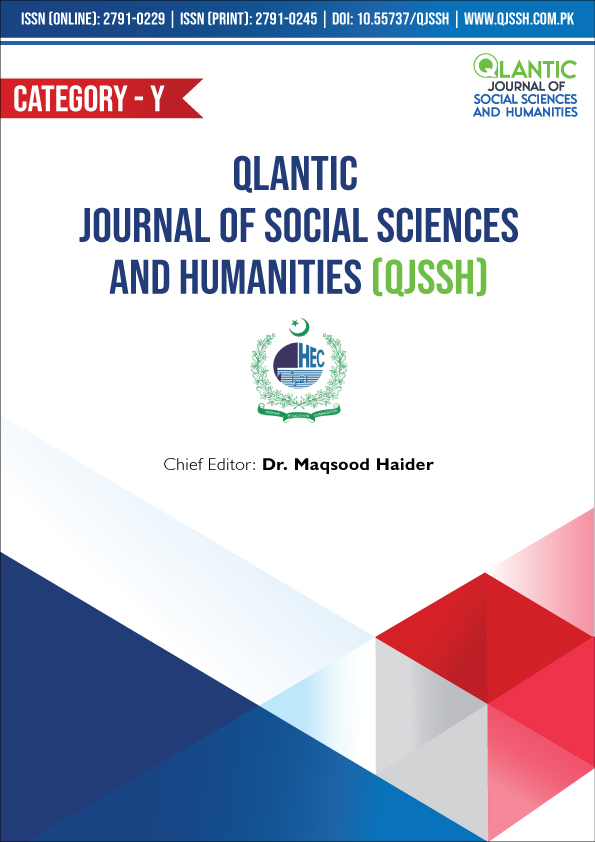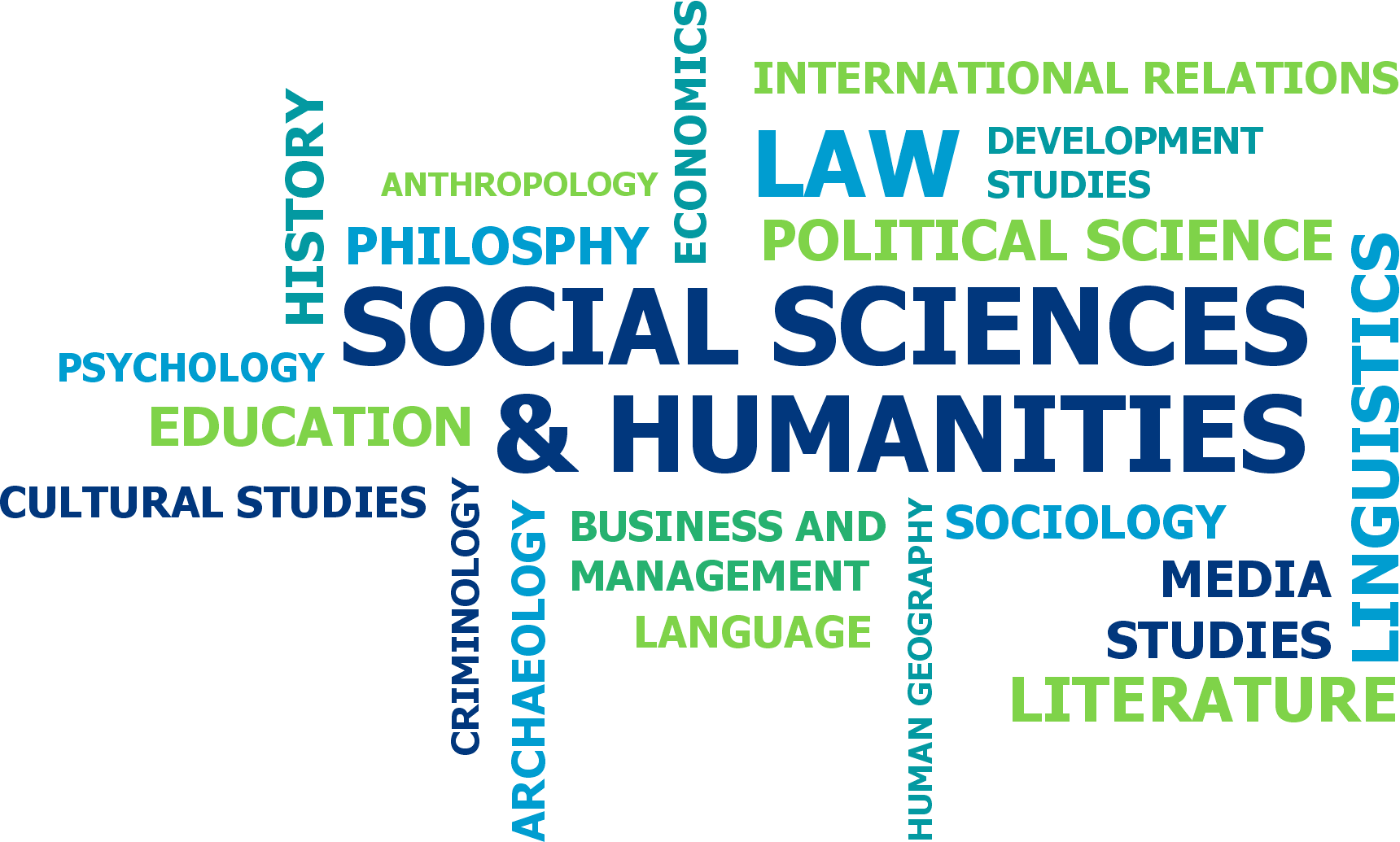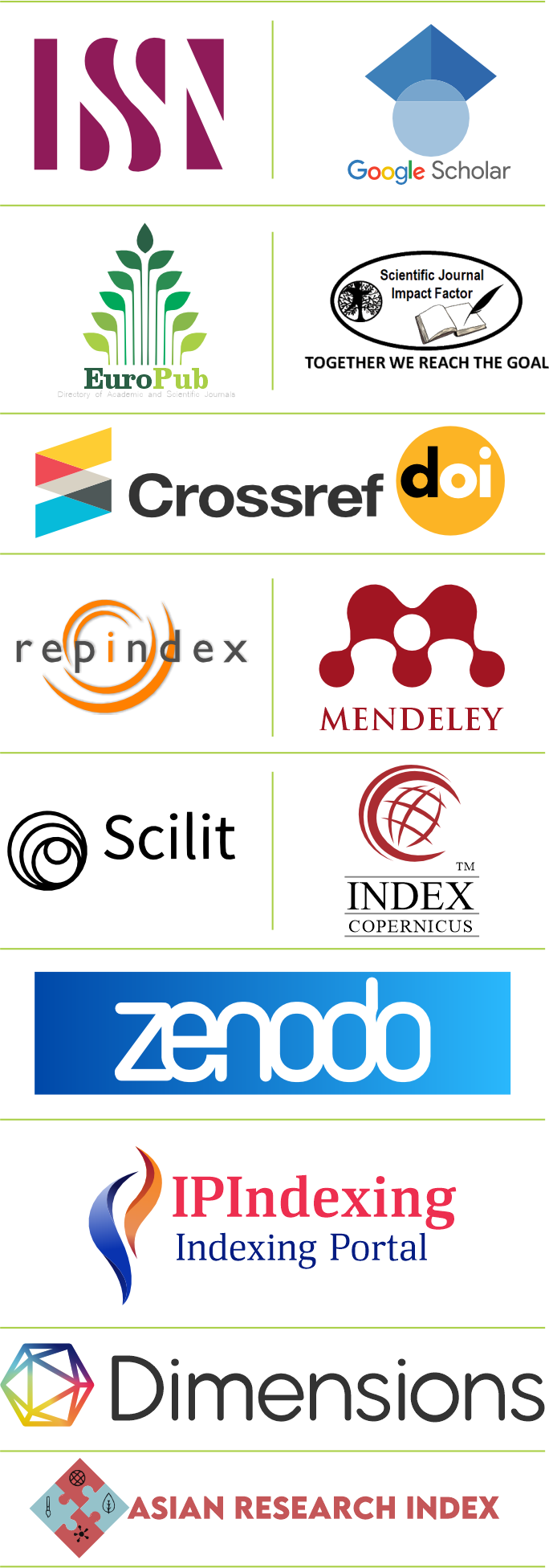“We Also Matter”: Investigating Organizational Support and Recognition Mechanisms for Non-Academic Staff in Public Universities
DOI:
https://doi.org/10.55737/qjssh.vi-i.25341Keywords:
Capacity Building Mechanisms, Higher Education Institutions, Pakistan, Non-Academic StaffAbstract
The role of non-academic staff in ensuring the effectiveness, efficiency, and smooth functioning of Higher Education Institutions has become increasingly significant, particularly within the context of developing countries like Pakistan. However, in public sector HEIs, the focus on building the capacities of non-academic personnel remains minimal compared to academic staff development initiatives. This qualitative study investigates the current state of capacity building mechanisms for non-academic staff in public sector HEIs of Pakistan, highlighting challenges, existing gaps, and potential strategies. Through in-depth semi-structured interviews with ten non-academic staff members across five major universities, the study employs thematic analysis to identify key themes influencing staff development. The findings reveal systemic neglect, absence of structured training programs, limited career progression pathways, and insufficient institutional commitment. Drawing on best practices and relevant theoretical frameworks, the study proposes a comprehensive model for capacity building aimed at enhancing administrative efficiency, service delivery, and institutional governance. The paper concludes with recommendations for policymakers, higher education administrators, and human resource departments.
References
Abbas, A., Ekowati, D., Suhariadi, F., & Anwar, A. (2024). Human capital creation: A collective psychological, social, organizational, and religious perspective. Journal of Religion and Health, 63(3), 2168-2200. https://doi.org/10.1007/s10943-022-01665-8
Adeoye‐Olatunde, O. A., & Olenik, N. L. (2021). Research and scholarly methods: Semi‐structured interviews. JACCP: JOURNAL OF THE AMERICAN COLLEGE OF CLINICAL PHARMACY, 4(10), 1358-1367. https://doi.org/10.1002/jac5.1441
Afzal, A., Khalil, K., & Saleem, W. (2024). Unveiling the obstacles: Understanding data collection challenges for researchers in Pakistani universities. Journal of Asian Development Studies, 13(1), 115-131. https://doi.org/10.62345/jads.2024.13.1.10
Ahmad, A., Iftikhar, F., & Fatima, M. (2024). Reimagining Access: Transformational Diversity, Inclusion and Engagement Initiatives. The Bloomsbury Handbook of Diversity, Crises and Transformative Leadership in Higher Education, 56-81.
Ashok, M., Al Badi Al Dhaheri, M. S., Madan, R., & Dzandu, M. D. (2021). How to counter organisational inertia to enable knowledge management practices adoption in public sector organisations. Journal of Knowledge Management, 25(9), 2245-2273. https://doi.org/10.1108/jkm-09-2020-0700
Avenali, A., Daraio, C., & Wolszczak-Derlacz, J. (2022). Determinants of the incidence of non-academic staff in European and US HEIs. Higher Education, 85(1), 55-83. https://doi.org/10.1007/s10734-022-00819-7
Babbar, A. W., & Mehmood, F. (2024). Enhancing Academic Staff Quality and Performance in Higher Education Institutions. Al-Mahdi Research Journal (MRJ), 5(4), 175-185. https://ojs.mrj.com.pk/index.php/MRJ/article/view/316
Becker, G. S. (1964). Human capita. New York: National Bureau of Economic Research.
Beedell, A. (2021). From abstract concept to active participants: Reflections on a purposive sample. Crossing Conceptual Boundaries, 11(1), 8-17.
Bell, A. C., Harris, K., & Jerald, M. C. (2024). Flourishing together: Leveraging social‐personality psychology in community building for scholars of color. Social and Personality Psychology Compass, 18(10). https://doi.org/10.1111/spc3.70009
Bhat, Z. H. (2024). Evaluating training effectiveness in India: Exploring the relationship between training components, metacognition and learning outcomes. International Journal of Training and Development, 28(1), 86-117. https://doi.org/10.1111/ijtd.12311
Biswas, A., Reon, M. A., Das, P., Tasneem, Z., Muyeen, S. M., Das, S. K., Badal, F. R., Sarker, S. K., Hassan, M. M., Abhi, S. H., Islam, M. R., Ali, M. F., Ahamed, M. H., & Islam, M. M. (2022). State-of-the-Art review on recent advancements on lateral control of autonomous vehicles. IEEE Access, 10, 114759-114786. https://doi.org/10.1109/access.2022.3217213
Braun, V., & Clarke, V. (2006). Using thematic analysis in psychology. Qualitative Research in Psychology, 3(2), 77-101. https://doi.org/10.1191/1478088706qp063oa
Citra, M. (2023). Human resource management in the context of higher education: Strategies for developing the potential of academic and non-academic employees. Al-Fikru: Jurnal Ilmiah, 17(2), 232-242. https://doi.org/10.51672/alfikru.v17i2.251
Dupre, B., & Salehi, N. (2025). Understanding occupational therapists’ job satisfaction through an ecological lens—A qualitative scoping review. Occupational Therapy International, 2025(1). https://doi.org/10.1155/oti/3268526
Fioreze, C., & McCowan, T. (2018). Community universities in the south of Brazil: Prospects and challenges of a model of non-state public higher education. Comparative Education, 54(3), 370-389. https://doi.org/10.1080/03050068.2018.1433651
Gan, E. (2021). Roles of leadership and non-academic staff in providing quality higher education: A review paper. Higher Education as An Enterprise–Embedding The Quality Assurance Culture, 133.
Gander, M., Girardi, A., & Paull, M. (2019). The careers of university professional staff: A systematic literature review. Career Development International, 24(7), 597-618. https://doi.org/10.1108/cdi-07-2018-0191
Genga, C. A., & Babalola, S. S. (2025). Digital transformation: The need for a sustainable green culture in African higher education institutions. Journal of Educational Technology Development and Exchange, 18(1), 109-130. https://doi.org/10.18785/jetde.1801.07
Gilliam, S. D. (2024). Developing and Retaining High-Potential Non-Academic Employees in Private Higher Education Institutions to Create Sustainable Non-Academic Leadership Pipelines. https://digitalcommons.liberty.edu/doctoral/5665/
Glazier, R. A., Boydstun, A. E., & Feezell, J. T. (2021). Self-coding: A method to assess semantic validity and bias when coding open-ended responses. Research & Politics, 8(3). https://doi.org/10.1177/20531680211031752
Hou, A. Y., Hill, C., Justiniano, D., Yang, C., & Gong, Q. (2021). Relationship between ‘employability’ and ‘higher education’ from global ranker and accreditor’s perspectives—does a gap exist between institutional policy making and implementation in Taiwan higher education? Journal of Education and Work, 34(3), 292-312. https://doi.org/10.1080/13639080.2021.1922619
Huencho, V. F., & Orellana, J. P. A. (2023). Active Representation in Indigenous Public Managers: New Challenges to Representative Bureaucracy Theory. In Global Encyclopedia of Public Administration, Public Policy, and Governance (pp. 214-219). Cham: Springer International Publishing.
Iqbal, S. (2024). ISO 9001 as a catalyst: Linking staff training to university performance. The TQM Journal. https://doi.org/10.1108/tqm-06-2024-0216
Karatsareas, P. (2022). Semi-structured interviews. Research Methods in Language Attitudes, 99-113. https://doi.org/10.1017/9781108867788.010
Khattak, S. (2022). The Field of Higher Education in Pakistan as Experienced by Faculty-A Bourdieusian Analysis (Doctoral dissertation, University of Toronto (Canada)).
Knowles, M. (1977). Adult learning processes: Pedagogy and andragogy. Religious Education, 72(2), 202-211. https://doi.org/10.1080/0034408770720210
Lim, W. M. (2024). What is qualitative research? An overview and guidelines. Australasian Marketing Journal, 33(2), 199-229. https://doi.org/10.1177/14413582241264619
Ma, X., Chen, M., & Diao, J. (2025). Pathways and outcomes of digital transformation in Chinese vocational colleges. Vocation, Technology & Education, 2(1). https://doi.org/10.54844/vte.2024.0800
Mafindi, K. A. (2024). Evolution and impact of personnel management practices in higher education institutions. Solo Universal Journal of Islamic Education and Multiculturalism, 2(03), 279-292. https://doi.org/10.61455/sujiem.v2i03.209
Maiya, A. K., & Aithal, P. S. (2023). A review based research topic identification on how to improve the quality services of higher education institutions in academic, administrative, and research areas. International Journal of Management, Technology, and Social Sciences, 103-153. https://doi.org/10.47992/ijmts.2581.6012.0292
Manzoor, A. A., Farooq, R., & Zafar, N. (2024). Unveiling the Interplay of Educational Excellence and Talent Mobility: An In-depth Exploration of Pakistan's Educational Revitalization Efforts by the Higher Education Commission (HEC) to Mitigate the Talent Drain Challenge. Annals of Human and Social Sciences, 5(2), 441-453. https://doi.org/10.35484/ahss.2024(5-ii)41
Maxwell, D. (2024). Capacity building as a strategic tool for attainment of quality education in public schools in Nigeria. International Journal of Scientific Research in Education, 17(1), 111-126. https://www.ijsre.com.ng/assets/vol.%2C-17(1)-dorcas-maxwell.pdf
Md, S., Md Saiful, I., & Jannatul, F. (2025). Harnessing AI Adoption in the Workforce A Pathway to Sustainable Competitive Advantage through Intelligent Decision-Making and Skill Transformation. American Journal of Economics and Business Management, 8(3), 954-976. http://eprints.umsida.ac.id/15798/
Menon, S., & Suresh, M. (2021). Factors influencing organizational agility in higher education. Benchmarking: An International Journal, 28(1), 307-332. https://doi.org/10.1108/bij-04-2020-0151
Meyer, F., Birkeland, I. K., Emstad, A. B., & Le Fevre, D. M. (2020). Leaders’ collaborative problem-solving behavior in conversations in Norway and New Zealand. International Journal of Leadership in Education, 26(6), 937-959. https://doi.org/10.1080/13603124.2020.1849808
Mohamed Hashim, M. A., Tlemsani, I., & Matthews, R. (2022). Higher education strategy in digital transformation. Education and Information Technologies, 27(3), 3171-3195. https://doi.org/10.1007/s10639-021-10739-1
Nakimuli, A. (2023). Delivery of non-academic student support services by staff at Kyambogo University. East African Journal of Education Studies, 6(2), 302-314. https://doi.org/10.37284/eajes.6.2.1339
Omodan, B. I. (2024). Redefining university infrastructure for the 21st century: An interplay between physical assets and digital evolution. Journal of Infrastructure, Policy and Development, 8(4), 3468. https://doi.org/10.24294/jipd.v8i4.3468
Owusu-Agyeman, Y. (2024). How lifelong learning shapes the professional development of staff in higher education institutions. Quality Education for All, 1(2), 134-150. https://doi.org/10.1108/qea-01-2024-0013
Paton, M. C. (2023). Carving Space for Staff Agency in a Faculty of Medicine: A Foucauldian-inspired discourse analysis of administrative staff and faculty relations [Doctoral dissertation]. University of Toronto Canada.
Petrychenko, O., Petrichenko, I., Burmaka, I., & Vynohradova, A. (2023). Changes in modern university: Challenges of today and development trends. Collection of scientific works of the State University of Infrastructure and Technologies series "Transport Systems and Technologies", (41), 74-83. https://doi.org/10.32703/2617-9059-2023-41-6
Pham, D. H. (2021). The professional development of academic staff in higher education institution. Journal of Teacher Education for Sustainability, 23(1), 115-131. https://doi.org/10.2478/jtes-2021-0009
Rådberg, K. K., & Löfsten, H. (2023). The entrepreneurial university and development of large-scale research infrastructure: Exploring the emerging university function of collaboration and leadership. The Journal of Technology Transfer, 49(1), 334-366. https://doi.org/10.1007/s10961-023-10033-x
Saad, Z. A., Fauzi, M. A., Zulkepeli, L., Moshood, T. D., & Hussain, S. (2024). Green human resources in higher education institutions: A systematic literature review. Journal of Applied Research in Higher Education. https://doi.org/10.1108/jarhe-01-2024-0033
Sain, Z. H., Nurtina, S., Agoi, M. A., & Thelma, C. C. (2024). Sustainable development. Journal of Information Systems and Technology Research, 3(2), 80-85. https://doi.org/10.55537/jistr.v3i2.830
Samo, N., & Junejo, M. A. (2020). An empirical study on measuring the role of career development programs of Public Sector Universities of Sindh. Dilemas Contemporáneos: Educación, Política y Valores, 7(2).
Schneider, J. (2023). Labor migration schemes, pilot partnerships, and skills mobility initiatives in Germany. Background paper to the World Development Report, 17.
Schultz, T. W. (1961). Investment in human capital. The American economic review, 51(1), 1-17. https://doi.org/10.2307/2525048
Shipp, A. J., & Jansen, K. J. (2021). The “Other” time: A review of the subjective experience of time in organizations. Academy of Management Annals, 15(1), 299-334. https://doi.org/10.5465/annals.2018.0142
Sipahioglu, M. (2025). Effective Leadership Strategies for Enhancing Student Success in Higher Education: Insights for Administrators, Faculty, and Policymakers. In Navigating Leadership and Policy Management in Education (pp. 169-202). IGI Global.
Southren, M. (2015). Working with a competency-based training package: A contextual investigation from the perspective of a group of TAFE teachers. International Journal of Training Research, 13(3), 194-213. https://doi.org/10.1080/14480220.2015.1077722
Stage, A. K., & de Jong, S. (2023). Non-academic staff's part in transforming academia: as irrelevant as their label suggests?. In Research Handbook on the Transformation of Higher Education (pp. 142-162). Edward Elgar Publishing.
Suwannatarn, Y., & Asavisanu, P. (2022). The development of a model for enhancing leadership capabilities of non-academic staff in a Thai private higher education institution. Scholar: Human Sciences, 14(2), 59-59. https://auojs.au.edu/index.php/Scholar/article/view/5491
Widarni, E. L., & Bawono, S. (2021). Human capital, technology, and economic growth: A case study of Indonesia. The Journal of Asian Finance, Economics and Business, 8(5), 29-35. https://koreascience.kr/article/JAKO202112748674836.page
Zainab, R. (2023). Educational innovation amidst globalization: Higher education institutions and societal integration. IgMin Research, 1(2), 154-159. https://doi.org/10.61927/igmin131
Downloads
Published
Issue
Section
License

This work is licensed under a Creative Commons Attribution-NonCommercial 4.0 International License.





